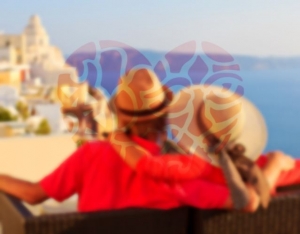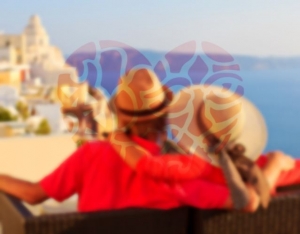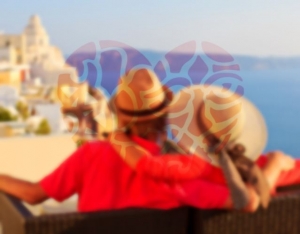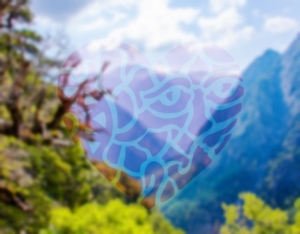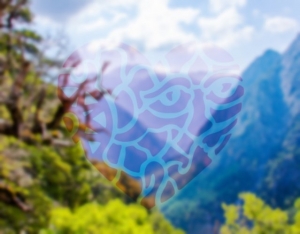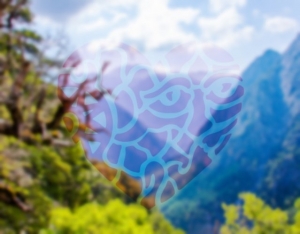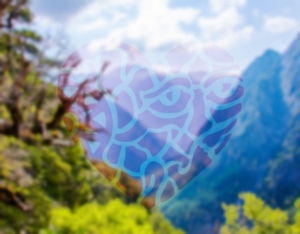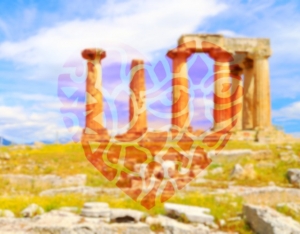Thodoris Bgenopoulos
Bourtzi is in Karystos in Euboea(Evia).
The term "bourtzi" was used to describe fortresses which were in coast or peninsula and sometimes also in islets, with most famous the Bourtzi in Nafplio.
Bourtzi in Karystos is located on the promenade of the city. It was built by the Venetians in the 14th century to protect Karystos from attacks and raids. This two-storey fortress survives almost intact with its embrasures and the holes through which the defenders pored boiling oil poured on invaders. In several points of the fortress one can distinguish pieces of ancient buildings (mainly Roman) that were used for its construction.
Bourtzi is one of the most beautiful sights in Karystos and in summer it hosts art exhibitions and other cultural events.
Karababa Castle is situated in Chalkida, Euboea(Evia).
It is built in a very strategic position, so it can control both the city of Chalkida and Evripos strait. . Probably the hill upon which it is built was fortified during the Roman era, while some identify the specific location with the Ancient Kanithos.
The Karababa Castle was constructed by the Turks in 1684 and having withstood the siege of the Venetian Morosini in 1688, it returned to the Greeks after the success of the revolution of 1821. The castle had three bastions and a large tower, while in its precinct a temple is preserved dating to the end of 19th century, dedicated to the Prophet Elijah. At the entrance of the castle you will see the tomb of the poet Giannis Skarimbas.
During your holidays in Chalkida, it is worth spending some time in the Karababa Castle, enjoying the fortifications, the 19th century cannons and of course the magnificent views of the area.
The Chalkida Bridge is in the city of Chalkida, in Euboea(Evia).
A bridge has always been standing there since ancient times,connecting Central Greece and Euboea. Once wooden and later metal, the bridge contributed to the communication of Evia with the rest of Greece and the economic development of the region.
Today on the spot you will see two bridges, the so-called Old Bridge and the high Bridge of Chalkida.
The Old Bridge is metallic and electric, so that it can open and allow the passage of ships. On the side there are pavements, from which people usually watch the phenomenon of the Evripos tide. The Old Bridge faced serious traffic congestion, which was significantly reduced by the construction of the new bridge, known as High Bridge of Chalkida.
Completed in 1993, the High Bridge of Chalkida helped greatly in traffic decongestion and the further development of Evia. The bridge is cabled with a total length of 695 meters, width 12,5 meters and height of 34,5 meters. Brace yourselves for once you find yourself here, you can also do bungee jumping off the High Bridge Chalkida.
Both bridges are major attractions and the unique ways in which you can get by car to Evia.
You can observed the famous Evripos tide in the Evripos strait in Evia.
The Evripos tide is a unique phenomenon that occurs in the strait of Evripos. At this point, water runs constantly changing direction of movement about every six hours, sometimes to the South and sometimes to the North with Evian Gulf as an intermediate small space where they remain stationary. This constant motion gave the sea and the area the nickname "crazy waters".
This phenomenon has been observed since ancient times, puzzling some of the leading thinkers of the era, such as Eratosthenes and Aristotle. Actually, it is said that he dived into the waters trying to solve the mystery of their motion.
Today the accepted explanation for this very special phenomenon is that the Aegean tidal wave enters the northern and southern Gulf of Evia with time difference, thus creating this spectacular movement.
Whatever the explanation, this is a very special and beautiful phenomenon worth seeing first hand when you find yourself in Chalkida.
The thermal springs of Edipsos are located in Edipsos, Euboea (Evia).
Famous since ancient times, these thermal springs have been reported in the writings of Aristotle and Strabo for their benefits. This resulted in Edipsos being considered one of the most important if not the most important thermal spring-city in Greece.
It is estimated that today over 80 thermal springs are exploited by the big EOT hydrotherapy center or private hydrotherapy/spas-hotels. All are equipped with swimming pools, special baths and have specialized staff. Every year thousands of people resort to the thermal springs of Edipsos to alleviate chronic ailments (arthritis, lumbago, gynecological diseases, etc.) and to feel physical wellbeing.
Even swimming at the beach of Edipsos is considered (and actually is) refreshing, making Edipsos one of the most popular leisure destinations across Euboea.
The waterfalls of Drymona are in the northern part of Euboea(Evia).
Located near the namesake village, the waterfalls are at an altitude of over 600 meters. It is formed by the waters of Sipia river, creating two large lakes that compose a beautiful landscape of outstanding natural beauty. If you happen to hike in the area, you should definitely visit the Drymona waterfall; your jaw will drop by its beauty.
The Kserasia Petrified Forest is in Kerasia, Euboea(Evia).
It has an age of over 10 million years. In the Kserasia Petrified Forest, you will find impressive petrified tree trunks while many of the findings (mainly fossilized skeletons of animals) are exposed and the Museum Fossil Mammal Cherry.
You nature-enthusiasts cannot leave Evia without visiting the Kerasia Petrified Forest!
Ancient Eretria is in Euboea(Evia).
Eretria was an important city-state of antiquity that flourished for several centuries and acquired colonies, but after the victory of Philip of Macedonia over the Greeks, it was gradually led to decline and it was finally depopulated during the first century B.C.
In the ancient city a new town was founded in 1824 by the residents of Psara island, who were forced to abandon their homes. In fact, the site was originally named Nea Psara, only to switch later to its older name. Today among the buildings of modern Eretria, one can still catch a glimpse of the remains of the ancient city, including:
• The Temple of Apollo: the religious center of the ancient city from which only the foundations are preserved
• The Ancient Theatre of Eretria, built on an artificial hill, with a probable capacity that fit over six thousand spectators
• The Temple of Isis
• The Eretria Dome, part of the town's ancient market, from which the foundations are preserved.
• The Macedonian Tomb
• The House of Mosaics, constructed around 370 BC featuring floor with impressive decorations.
Many of the mobile findings of the above archaeological sites can be seen in the Archaeological Museum of Eretria. Once you find yourself in Eretria, take the opportunity to admire the remains of the ancient city.
The Archaeological site of Kymi is located in Kymi, Euboea(Evia).
Archaeological excavations revealed a settlement of the Geometric period that was identified with the ancient Kymi. It is just three kilometers from the sea, upon Viglatouri hill.
The settlement, whose ruins are visible, possessed houses, cobbled streets, squares, temples and walls. Making a visit to the archaeological site, you will see all that is left of the settlement and enjoy a magnificent view of the area.
The Roman Palestra is situated in Chalkida, Euboea(Evia).
Inscriptions found reveal that the construction of the palaestra of Chalkida are associated with Roman Titus. It was a quite large building that occupied an area of over 200 square meters.
Today only the foundations of the building survive, together with large floor sections decorated with beautiful mosaics.
If you stroll around Chalkida, passing by the Roman Palestra is not a bad idea.

